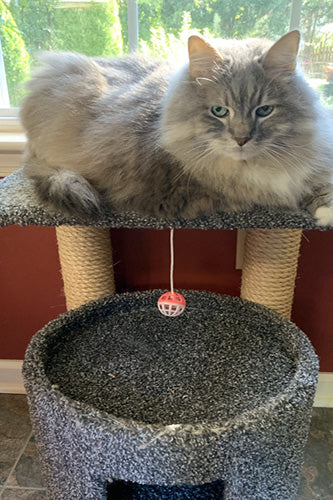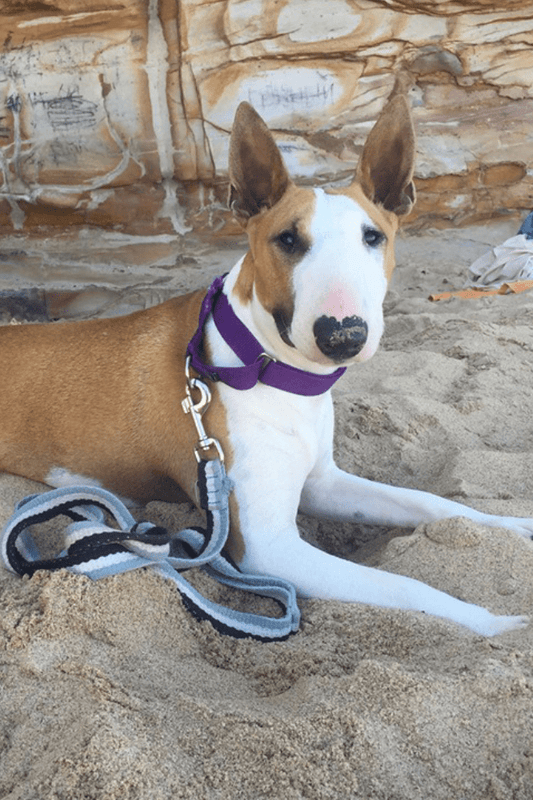Antinol Helped This Dog's Epilepsy
How the story begins
Just over a year ago Shock’s Mum reached out to us as a last resort. She was staring down the decision that all of us simply dread after years of battling what must be one of the most hideous diseases to manage in a dog. Shock was in her seventh week straight of horrible seizure clusters at the time and the fear of her never being able to have any quality of life due to brain damage was very real. At that point we had several anecdotal reports from epilepsy dog parents all noting super positive reduction in seizures/ recovery from seizure outcomes since starting Antinol with the majority using it in the first instance for degenerative joint disease. We didn’t have and don’t have any clinical evidence but based on the omega literature and these owner reports we wanted to start building enough case studies to be able to support going to clinical trial. Shock is the first dog who has been documented from the start including the capture of clusters, grand mals and psychomotor seizures at the start and prior to using Antinol. Below is written by her Mother.Shock's story
"At the tender age of just 16 months, Shock experienced her first seizure cluster and our world came crashing down. Watching my puppy thrashing around was honestly one of the scariest things I have ever experienced. 4 seizures within the first 24hrs meant the vet had no choice but to start her on anti-convulsant medication. Unfortunately, the medication that would help to keep her alive would likely destroy her liver at the same time and she was given a life expectancy of 4-5yrs. The months that followed were full of blood tests and vet visits in a desperate attempt to identify a trigger. Her seizure clusters were still occurring every 2-3 weeks, so a second anticonvulsant medication was added to the regime. We started to get breaks of 6-8 weeks and from a medical point of view she was deemed to be “controlled”. A week before her 2nd birthday, Shock had the first of her major clusters. Nothing we did was managing to stop them, and she had over 100 grand mal seizures in the space of 4 days. My vet advised that there was nothing left to try and an appointment for euthanasia was scheduled for the following morning. Luckily for Shock, a different vet in the clinic called about an hour before to tell me that if I was willing, she had a few ideas she would like to try. She was able to stop the seizures, made adjustments to the dosages, and Shock went back to living her life. Over the years we tried a number of medications in search of the magic combination. While some made her much worse, others gave us bigger breaks between clusters and we continued to tweak the protocol until we reached breaks of 4-6 months. In March 2020, Shock unexpectedly had a cluster, only 8 weeks after her previous one. It began as any other cluster, with grand mals for the first 4 days and then a few days of partials. When she had another grand mal on day 8 I knew that something was not right. At the 2 week mark she began to have psychomotor seizures, which are thought to be like vivid hallucinations. She would be perfectly calm before suddenly running away as though she were being chased, usually head-first into whatever was in her way. She was always on lead to keep her away from the walls and fences as we were concerned about concussion from the hard hits to her head. This cluster of seizures just was not stopping. Knowing that the medications could have caused irreparable damage to her liver, we ran every test imaginable, but everything suggested she was a perfectly healthy dog otherwise. Nothing was adding up from a medical sense, and nothing was stopping the cluster. As we approached the 7th straight week of daily seizure activity, I had pretty much given up all hope and was facing no choice but to say goodbye. Shock was no longer able to live a normal life; she could not be trusted off lead in case she suddenly took off, could not go to the park or the beach, and could not even cruise around the backyard unsupervised. In a last ditch effort, I reached out to Sam at Antinol to see if they were aware of any epileptic dogs that had done well on it, given how healthy omegas are for the brain. Sam agreed it was worth giving it a go and I started her on it immediately.Starting on Antinol
Within 24hrs of taking the Antinol, Shock’s partial seizures were so minor that anyone who did not know her well would not even know she was having them. Within 48hrs they had stopped completely! After 7 weeks worth of trying everything, I could not believe what I was seeing. Shock did have another cluster about 8 weeks later, but it was the most minor event she has ever had. Only 3 seizures and there was about 48hrs between each one with a quick recovery from each. That was nearly 10 months ago and at the time of writing this, Shock has not had any seizures since. She has never had a break this long before. She also celebrated her 8th birthday last month and is looking healthier than ever. When her seizures began, Shock was in training for agility. Everything she had already learned was retained, but she has never been able to learn anything new. Since being on the Antinol, Shock has actually been able to learn a few new things and has even attended some flyball training lessons for something different! Over the years, Shock has successfully competed in ADAA agility as her jump height is 400mm. She even gained her agility championship in 2019. She was never able to compete in ANKC agility though, as she simply did not have the power in her back legs to clear the 500mm jumps. Since being on Antinol she has successfully returned to ANKC agility and is managing the jumps easily and qualifying at most of the competitions she has entered. I have no idea how long we have until her next seizures, and I have no idea how severe they will be when they happen. What I do know is that if it weren’t for Antinol Rapid, Shock would not be here today. I am so glad I thought to ask Sam the question that day!"










